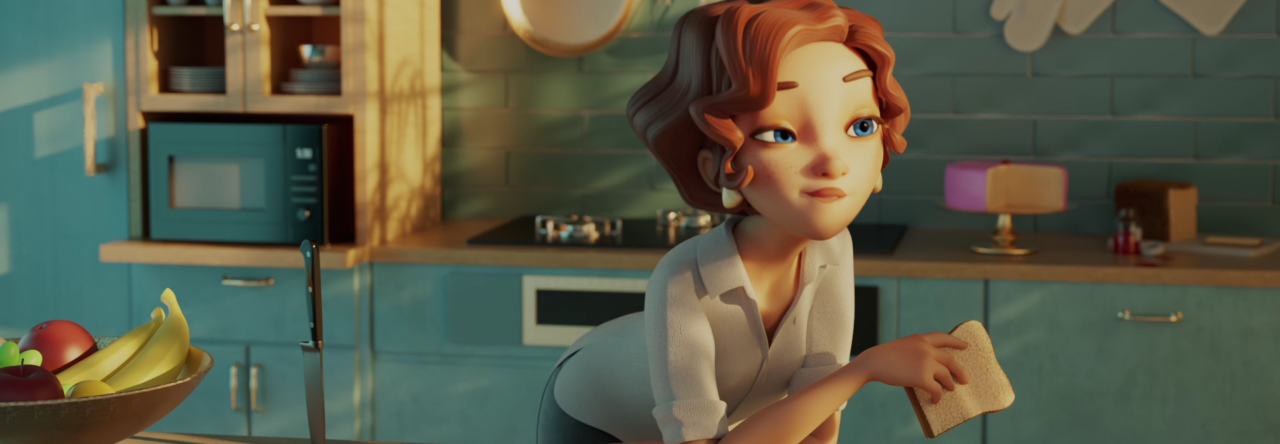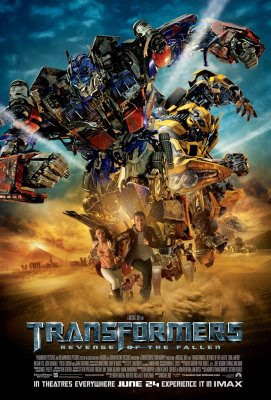It depends what you mean by difficult. I’m discovering that every shot has some element that seems really problematic as you are sitting in the shot working on it. Whether it’s a wide shot, with things interacting, or a 20 frame reaction shot, it seems there’s always a period in the process where I`m thinking “oh man.. this is looking horrible.. another failed shot”. Funny enough, it seems that shots I find especially difficult are usually the ones I ending up liking the best when all is done. It’s a hard question to answer in short.
The shot I was most scared of was in Transformers 2, where BumbleBee rips the arms off a Decepticon then kicks him up towards the camera. They cast me that as my first shot, and I was just thinking “how am I going to be able to do this?”… I wasn’t so worried about the physicality and the staging, but more so because I was used to animating in a very layered way that would be very difficult to present as a complete “blocking” idea early on to the director. So, my fears were mixed with not only what I was going to do, but how to do them on a very fundamental workflow level. I ended up planning it on paper as much as I could (this is not usual for me) then blocking it in very roughly in spline. To make matters worse, I got signed off on the blocking, then I was taken off it to work on another shot for a number of weeks. In the back of my mind I was constantly afraid of going back to that shot and making it actually work to the level of detail and realism that was required. In the end, I just layered through it in a way I was used to, but killed myself over a small 30 frame section in the middle that literally took me about a week to get right!
Many top animators focus more on physical or acting shots, but you’re great at both. How have you balanced those areas of expertise?
I started off animating physicality and I’m glad I did because it’s the foundation of a believable performance. I don’t think it’s anymore important than the acting choices and ideas you use in the shot, but it’s the first place to start learning animation in my opinion. It’s also usually the most obvious to the audience if something is done incorrectly or even just “not quite right”. Even with a subtle acting shot, I still lock down the blocking of the characters physicality, before I start working on the facial animation.
The most critical tool I think I have is a workflow approach that has evolved from two distinctively different ways of working. As I mentioned before, I used to animate very layered, not using full body poses at all, and starting with the body parts that drive the performance and basically animating them fully before moving onto the next body part. The other approach is thinking more traditionally, like drawings, and creating poses and breakdowns that describe the performance in a lower resolution (usually ending on two’s as the maximum resolution before going to spline). The truth is, it was very difficult to learn how to animate that way after animating layered for so long, but now I use a hybrid of both approaches which I believe is the best mindset. I animate in stepped, creating poses on the full body of the character and keying everything through the main keys of the shot, then instead of progressively breaking down those keys, I work in a layered way in small sections, from start to finish, but keeping everything in stepped and everything keyed on the same frames- but basically still in a layered way. Using this approach, I find I can quickly get down to two’s (if I trust my keys and they work nicely) and can get very clear blocking in front of the director without an insane amount of time. Having a good understanding of both these approaches is great because each “type” of shot has its best approach- a physical shot usually benefits from the layered approach, where an acting shot needs the poses and the clarity to communicate the complexities of the attitude, and to be able to fully control the characters design and appeal.
How do you usually decide on your acting choices?
That’s a pretty easy one to answer. With an acting shot- I always use extensive reference to determine my choices. Before I start reference, I check the shot to clarify more technical things like how far the character has to move, the size of the camera lens and that sort of thing so I understand more of the constraints in which I have to move the character, and what the staging needs to be. As far as the subtext of the shot- I make sure I get that clear during the launch with the director, so then I understand what attitudes I need to act within. After that, its pretty much full on reference time, and depending on the length of the shot, I can record a huge amount of takes until I find what I want. It seems to me to take that long to really get into the character and find what feels natural. The “natural” acting is what I’m looking for… something I would never have thought of just in thumbnails.
I soon learned that I needed video reference myself for acting shots. In fact, if I can use reference for any shot, I will. I find with acting I just can’t make that stuff up in my head, I need to actually see it. I also make sure I get at least three or four “good takes” and then I watch them in continuity with the animated shots around it. Even though I’m looking at myself (and not the character), it can quickly reveal an acting choice or gesture that looks great by itself but somehow doesn’t feel right in the scene.
It’s become a balancing act with how much I use the reference and how much I don’t. Sometimes I get caught up trying to find the “perfect take” only to realize that I simply don’t have the skills to act it. I still look for one continuous take (just so the physicality and the transitions make sense) but I’m teaching myself to combine different takes and figure out transitions manually, and be more creative with how I interpret the reference and change it for the benefit of the shot as I start blocking… but its still very new to me animating these kind of scenes.
That was a great shot in Megamind where he’s facing off against Hal, did you end up shooting video reference and choreographing that sequence?
The beats of the sequence had already been figured out in Layout, so with regards to choreography it was more about figuring out the details of the interactions between Hal and the Megamind robot. On the whole it was a tough sequence because of the size difference between the two characters… I shot reference of myself doing “sword-fighting” moves for the robot- but for Hal I just had to work through the shot in stepped, figuring it out in my head (I did the body and the lamp post first, then the arms and the legs). In the end Hal had to do big broad movements to get the battle to feel like they were really fighting, and he was at least some kind of challenge to the robot. A bi-product of this was that his motion seems somewhat fast, but this further adds to the feeling of miniaturization and helps make the scene a little more funny to watch.
AnimFood is awesome. I wanted to create something that could inspire me, or make me think about my shot, or a particular problem in a different way.. without having to do much more than press a few buttons a couple of times. The truth is that the actual content for AnimFood (its called “randoFlip” on the website) took a long time to compile and is from numerous sources, so it was fun to research and ultimately is really helpful to me from time to time.
One thing I’ve taken away from your incredible site was when you said, don’t force animation principles to guide how you construct a scene, or as a checklist to your work. Would you mind elaborating this further for all the new animators who scratch their heads over this.
Lastly can you tell us what’s next for you? Are we going to see more flip reviews on your blogs, more workflow demonstrations and more possible random scripts?
I desperately try to keep my personal work and the Flip site going as much as I can. The thing with the Flip site is that I still stand by my “mission statement” that I only post stuff on there that feels substantial and has educational purposes for me, and the readers. Unfortunately, I think it might not be obvious to people how long those kind of posts can take to create.. its tough. The video review thing went on hold as soon as I realized that my five year old laptop can’t handle them at all.. so I need to rethink that, as it was pretty fun for the few that I did. I definitely plan to do an updated workflow tutorial that discusses, in useful detail, how to create a shot with my layered and stepped mix. Hopefully I`ll have some new creature animation to show when I get around to completing that too. I know my Flip blog gets rarely updated, but I would like to keep it relevant, and not just post links, or stuff that I don’t feel benefits the community. If people want to drop me an e-mail with questions or topics to discuss that would be cool!
Cameron it’s been a pleasure doing this, I hope we see more awesome stuff come out of http://fliponline.blogspot.com/. If you guys haven’t head over there. Cameron has some great animation tutorials spanning over 10 years in the business. This man’s a genius. Thanks again mate!
Interview by: Andrew Tran






Leave a Reply